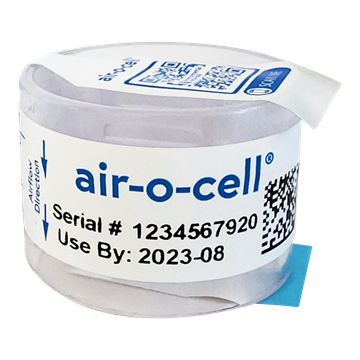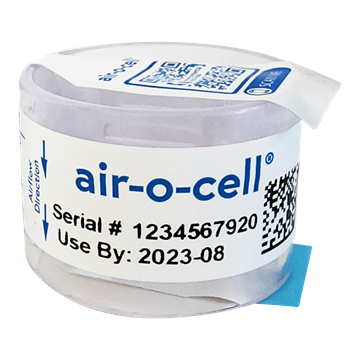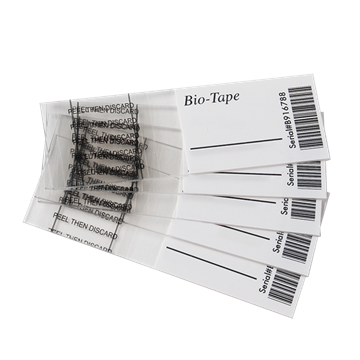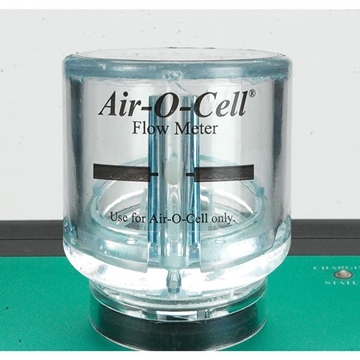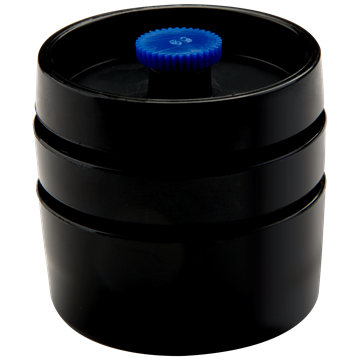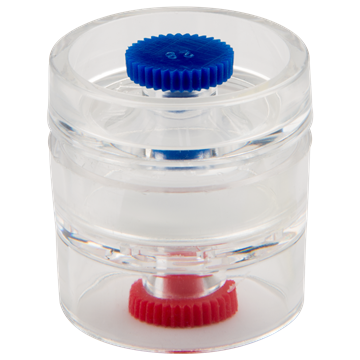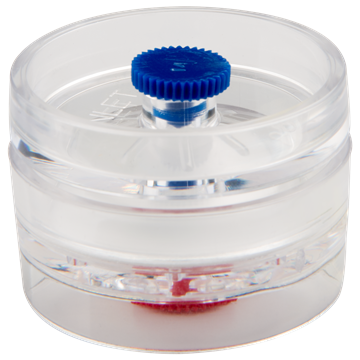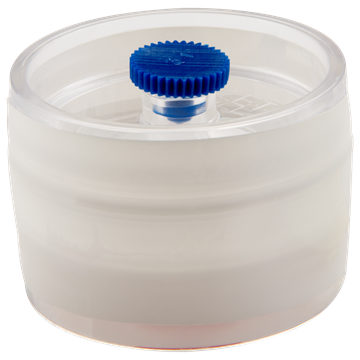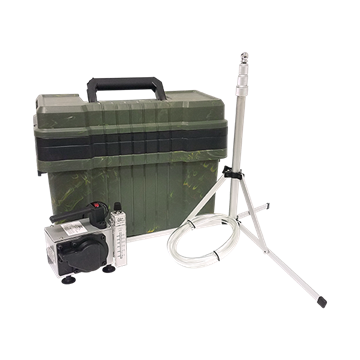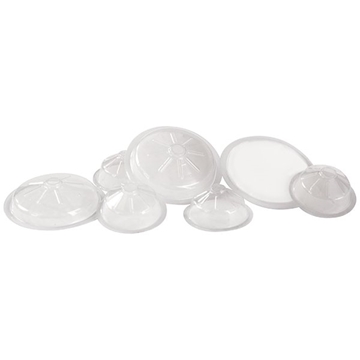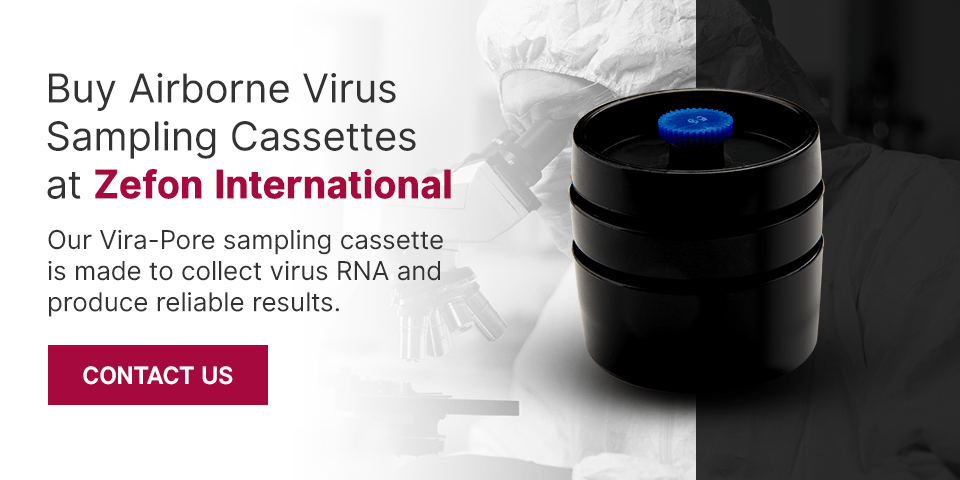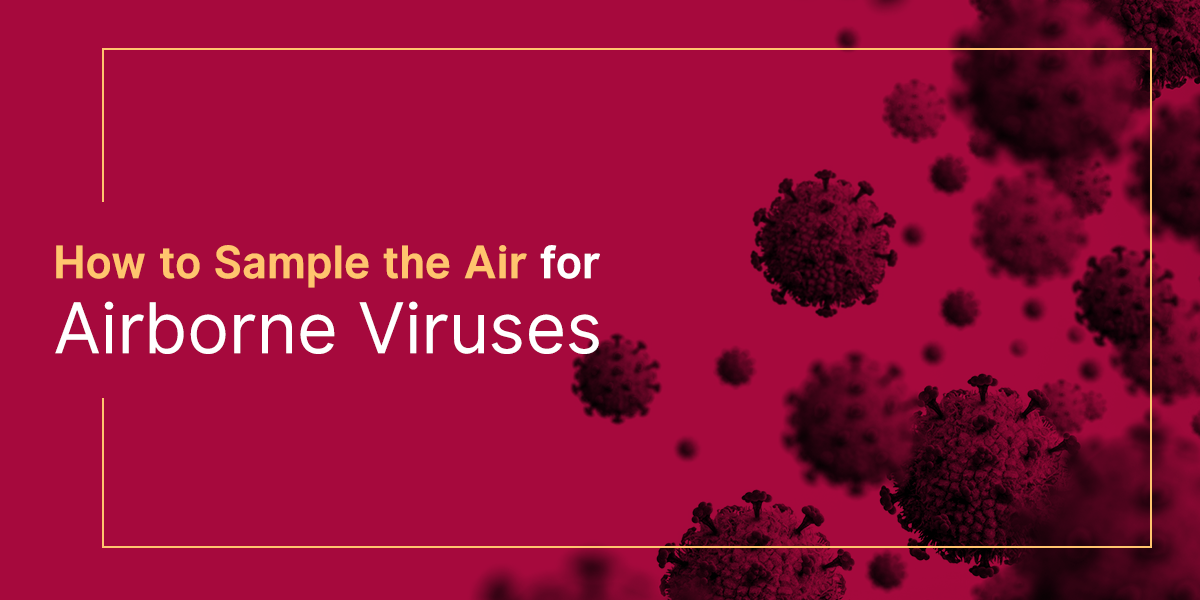
Table of Contents
- How Do Viruses Become Airborne?
- How Do Viruses Spread Through the Air?
- How Do Airborne Viruses Infect Someone?
- Types of Airborne Viruses
- Analysis of Samples for Bioaerosols
- Methods of Sampling for Airborne Viruses
- Choosing Equipment for Virus Air Sampling
- Buy Airborne Virus Sampling Cassettes at Zefon International
Workplaces can be the ideal setting for bioaerosols to take flight. Bioaerosols, or tiny airborne particles derived from biological sources, can potentially spread diseases in offices, medical facilities, factories, schools and various settings worldwide. If a person coughs or sneezes, they might generate thousands of virus-laden airborne particles. These microorganisms present a health risk to workers in all industries, particularly in indoor settings. They also cost companies billions of dollars each year due to health-related work losses.
You can test the air for viruses to determine the probability of airborne transmission or investigate the source of exposure to bioaerosols by using air sampling equipment. Subsequently, you can take steps to improve the ventilation or filtration systems in your facility and help employees breathe cleaner air.
How Do Viruses Become Airborne?
Any virus can become airborne. Wind can blow contaminated materials through the air, or a person can laugh and send infectious particles flying. At the right size in the right condition, an airborne virus can linger in the air long enough to potentially get another person sick. Many viruses can stay infectious outside of their host for prolonged periods.
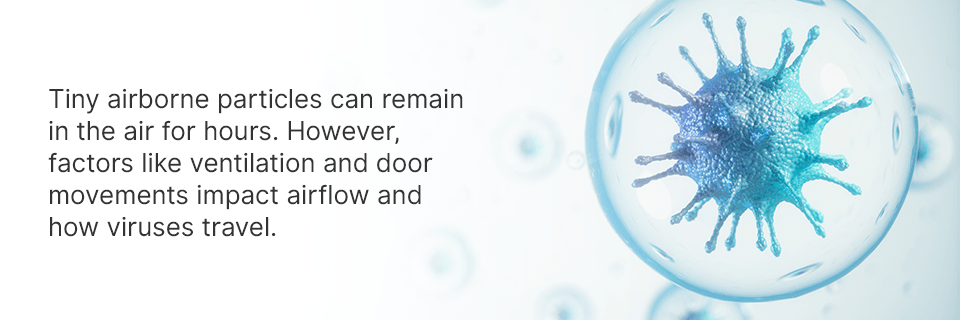
How Do Viruses Spread Through the Air?
Viruses spread through the air by traveling on respiratory droplets expelled by an infected person. According to the Centers for Disease Control and Prevention (CDC), sneezing can generate 40,000 droplets, which then evaporate and reduce to a size of 0.5 to 12 microns (μm). Though this may seem very small, virus particles are even smaller, being nanometers in size. Respiratory droplets might be packed with virus particles.
An airborne particle's shape, size and density determine how it will behave in the air. Although viruses can spread through the air as single units, they typically disperse in clusters. Large groups of particles have different aerodynamics than small, single units.
Typically, large particles fall to a surface closer to the source within seconds to minutes. In contrast, smaller particles tend to remain airborne, traveling further on air currents and potentially reaching people several feet away from the source.
Tiny airborne particles can remain in the air for hours. However, factors like ventilation and door movements impact airflow and how viruses travel. Any airborne particle will stay in the air until it's inhaled or settles on something.
How Do Airborne Viruses Infect Someone?
Airborne transmission refers to when someone is exposed to virus-filled respiratory droplets that stay suspended in the air. These may be small particles that can remain suspended at a long distance — typically 6 feet from the source. These extremely tiny airborne droplet nuclei can hang in the air for hours and potentially infect someone even after a sick person has left the room. Droplet nuclei range in size from 1 to 5 μm.
Airborne transmission can also happen with larger droplets. At a close distance, or within 6 feet, a person may inhale both small and large droplets. However, these larger droplets do not remain airborne for long periods or travel over great distances.
Types of Airborne Viruses
Airborne viruses include small enough pathogens to stay suspended in the air and cause disease through indirect contact. Although countless viruses exist on the planet, only a few hundred are known to infect humans, and even fewer are known to transmit to humans in the air. RNA viruses are particularly challenging because they evolve at rapid rates.
Here are some common RNA viruses that may be transmitted through the air and get humans sick:

SARS-CoV-2
SARS-CoV-2 is the virus that causes coronavirus disease 2019 (COVID-19). SARS-CoV-2 belongs to a family of viruses that can infect people and animals, called coronaviruses. Some coronaviruses cause mild respiratory illness, while others, like SARS-CoV-2, can cause more severe disease.
According to the CDC, research suggests that most COVID-19 infections are spread through close contact with an infected person — not via indirect airborne transmission.
However, the CDC also notes that airborne transmission of SARS-CoV-2 can occur under certain circumstances. These include enclosed spaces where an infected person is or has been and environments with poor ventilation. In areas that lack adequate ventilation, tiny suspended virus particles build up in the air, increasing the chance someone will get infected.
Airborne transmission of SARS-CoV-2 may also occur during aerosol-generating medical procedures, such as intubation. Aerosol coronavirus particles can stay in the air for up to three hours. The number of particles it takes for a person to become infected with coronavirus is still unknown.
Influenza
Influenza (flu) is a common and highly contagious respiratory illness caused by flu viruses. There are four types of influenza viruses, with type A and B viruses causing seasonal epidemics in the United States. Influenza A viruses are known to cause pandemics.
For example, swine flu is a subtype of influenza A. Although swine flu outbreaks regularly occur among pigs, they can sometimes infect people. A strain of swine flu, known as H1N1, caused a pandemic in 2009. Some influenza viruses, like H5N1, or bird flu, do not transmit easily between people. However, since flu viruses constantly change, even H5N1 could potentially cause a pandemic.
Influenza is thought to spread primarily through close contact with an infected person. Still, there's potential for airborne spread at a greater distance. According to an article published in Advances in Virology, influenza virus particles are constantly moving through the air, traveling within specks of dust or aerosolized droplets. While low amounts in the air may not cause infection, the risk increases at high concentrations. Factors like relative humidity and ambient air temperature also affect virus infectivity.
SARS
SARS, or severe acute respiratory syndrome, is caused by a virus named SARS-associated coronavirus (SARS-CoV). In 2003, the SARS outbreak led to 8,098 cases worldwide and 774 deaths. Most people who get infected with SARS-CoV develop pneumonia.
Like other coronaviruses, SARS-CoV is thought to spread mainly through close person-to-person contact via large respiratory droplets. However, it's still possible that SARS-CoV can disperse more widely through the air under special circumstances. For example, infectious droplets may become aerosolized during certain medical procedures, putting health care workers at higher risk of infection via airborne transmission.
Analysis of Samples for Bioaerosols
Bacteria and fungus traditionally have been analyzed by microscopic and culture techniques, but the modern method is polymerase chain reaction (PCR). Eluted samples are typically analyzed in a laboratory by PCR using primers specific for DNA from the bioaerosol of interest. Where the bioaerosol is a virus, the viral RNA is first converted to DNA using the enzyme reverse-transcriptase (RT-PCR). This can be a quantitative technique (qRT-PCR). Rapid methods of PCR are being developed which could lead to analysis in the field. These methods can provide a result in under 40 minutes, or in some cases, in as little as 10 minutes, after sample introduction.
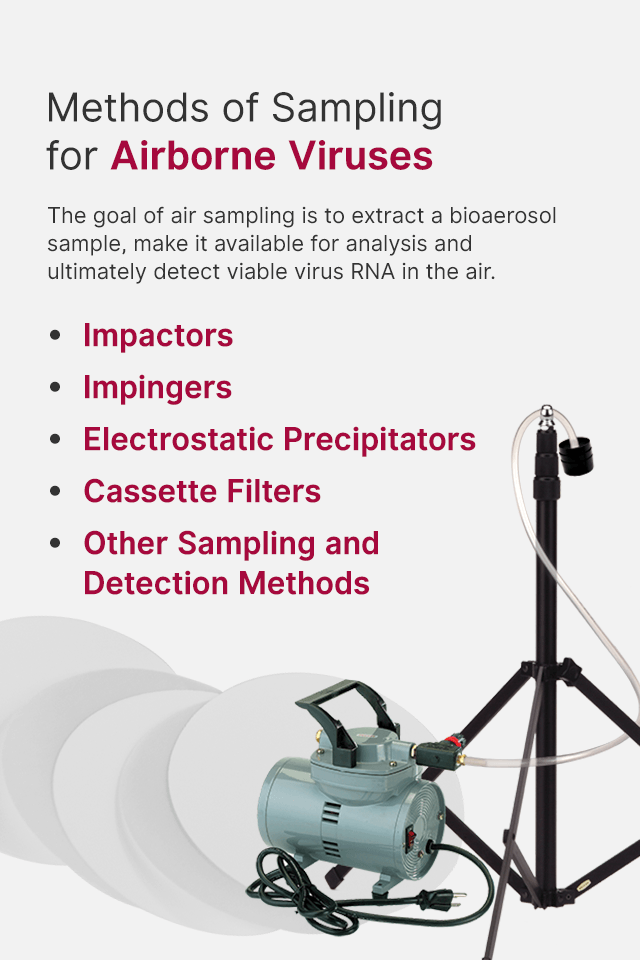
Methods of Sampling for Airborne Viruses
The goal of air sampling is to extract a bioaerosol sample, make it available for analysis and ultimately detect virus RNA in the air. Several options are available for bioaerosol sampling of respiratory viruses like SARS-CoV-2 and influenza. These include:
Impactors
Impactors are a practical choice for bioaerosol sampling because they sample large volumes of air in a short amount of time. An impactor consists of nozzles, a dry impaction surface and a vacuum pump. The device draws air through the nozzles toward the impaction surface, where large particles accumulate. Meanwhile, small particles continue flowing with the airstream. These small particles are not collected in an impactor, and so impactors underestimate exposure to small bioaerosols.
You can examine the captured particles on the impaction surface, choosing a method that matches the materials used. The impaction surface might consist of filter material or a growth substance like agar.
Impingers
With an impinger, you can collect bioaerosols in a liquid to prevent desiccation and increase the chance of maintaining particle viability. An impinger is a device that contains a collection liquid and a nozzle. Air flows through the nozzle at high speed and enters the liquid where the particles collect. Liquid impingers are often used for sampling the air for viruses. However, liquid-filled impingers are cumbersome samplers not well-suited to measure personal exposures. In addition, evaporation of the liquid during sampling restricts samples to short periods.
Electrostatic Precipitators
An electrostatic precipitator is a device that uses an electrical charge to filter the air. With an electrostatic precipitator, particles are drawn into the instrument and given an electrical charge. They are then deposited onto a collection material by electrostatic attraction.
Electrostatic precipitators require lower velocity for particle accumulation, offering a more gentle collection method. However, the equipment is typically more complex than other air sampling devices and may not be a practical choice for certain settings.
Cassette Filters
Filter-based cassettes are the most common method of sampling air for particles. Cassettes are hollow plastic or metal cylinders containing a hole at the base and a filter. They work with sampling pumps to draw air through the filter and collect particles. Cassettes made of conductive plastic help to ensure that fine particles reach the filter rather than being attracted to the cassette walls.
Filter-based particle collectors are commonly used for virus air sampling and other microorganisms because they are lightweight, easy to use and convenient. The filter traps bioaerosol particles on and in the membrane. You can then elute the particles into liquid in preparation for analysis. You might also examine the particles directly with a microscope.
You can use filters made of polycarbonate, polytetrafluoroethylene (PTFE), polyvinyl chloride, gelatin or other materials to sample the air depending on your analysis technique. Filters are also manufactured in various pore sizes.
At Zefon International, we offer the Vira-Pore conductive plastic sampling cassette with a ZePore™ PTFE filter validated specifically to sample air for the human coronavirus, OC43. By analogy, it may be possible to use the Vira-Pore sampling cassette to sample for SARS-CoV-2, influenza A and SARS-CoV. This sampling cassette can collect virus particles while maintaining RNA during sampling and transport to a laboratory. Lab technicians can elute and analyze the viral RNA. The cassette comes pre-loaded and ready for use with virtually any kind of sampling pump capable of pulling a 10 LPM (vacuum) airflow for short periods, including the Zefon High Volume Rotary Vane Pump. It can also be used with any personal pump capable of operating at 3 LPM for longer periods, including the Zefon Escort ELF.
Other Sampling and Detection Methods
There are other ways to determine the presence of COVID-19 or influenza without actually testing the air. For example, you can swab air purifier filters to look for virus particles or use settle plates to detect airborne microorganisms. A settle plate may be a Petri dish that contains agar. Place the dish in the area you wish to examine and allow particles to settle for a specific amount of time.
You can also take samples from any surface that may be coated in virus particles using tape. A product like Bio-Tape is a quick and easy way to gather a sample from a contaminated surface and test for bioaerosols.
Choosing Equipment for Virus Air Sampling
Viable airborne viruses can be challenging to collect and analyze because temperature, humidity and other environmental factors can greatly impact infectivity. Some air sampling techniques may also damage the virus particles and affect the analysis. According to an article published in Science of the Total Environment, it is not mandatory to maintain virus viability with air sampling, but you'll want to keep its nucleic acid intact. Therefore, it's critical to develop a collection strategy and choose a sample device carefully.
The CDC recommends considering the following when choosing an air sampling instrument:
- The type of virus you're sampling, as well as its viability and size
- The air sampling device's compatibility with analysis methods
- Air volume to be sampled
- How long you need the device to operate continuously
- The air sampler's efficiency
- Environmental conditions
- Whether the sampler device is easy to use or requires special skills
- The sampler's cost and availability
- Whether you have the auxiliary equipment and utilities needed to use the sampler device
Regardless of the air sampling equipment you choose, be prepared to have air samples from a different time period or under various conditions to compare results to your latest sample.
Buy Airborne Virus Sampling Cassettes at Zefon International
New viruses, like SARS-CoV-2, pose a lot of questions. Scientists still have a lot to learn about this new virus that causes COVID-19, such as environmental conditions that promote airborne transmission of SARS-CoV-2. In addition, there is no standard method of air sampling and detection of coronaviruses, influenza and other airborne viruses.
Nevertheless, workplaces want to know what their indoor environment looks like during a pandemic and the probability of airborne transmission. At Zefon International, we offer air sampling solutions when businesses and their employees want answers.
Our Vira-Pore sampling cassette is made to collect virus RNA and produce reliable results. If you have any questions about Vira-Pore and how it works, please contact us at Zefon International today.
























